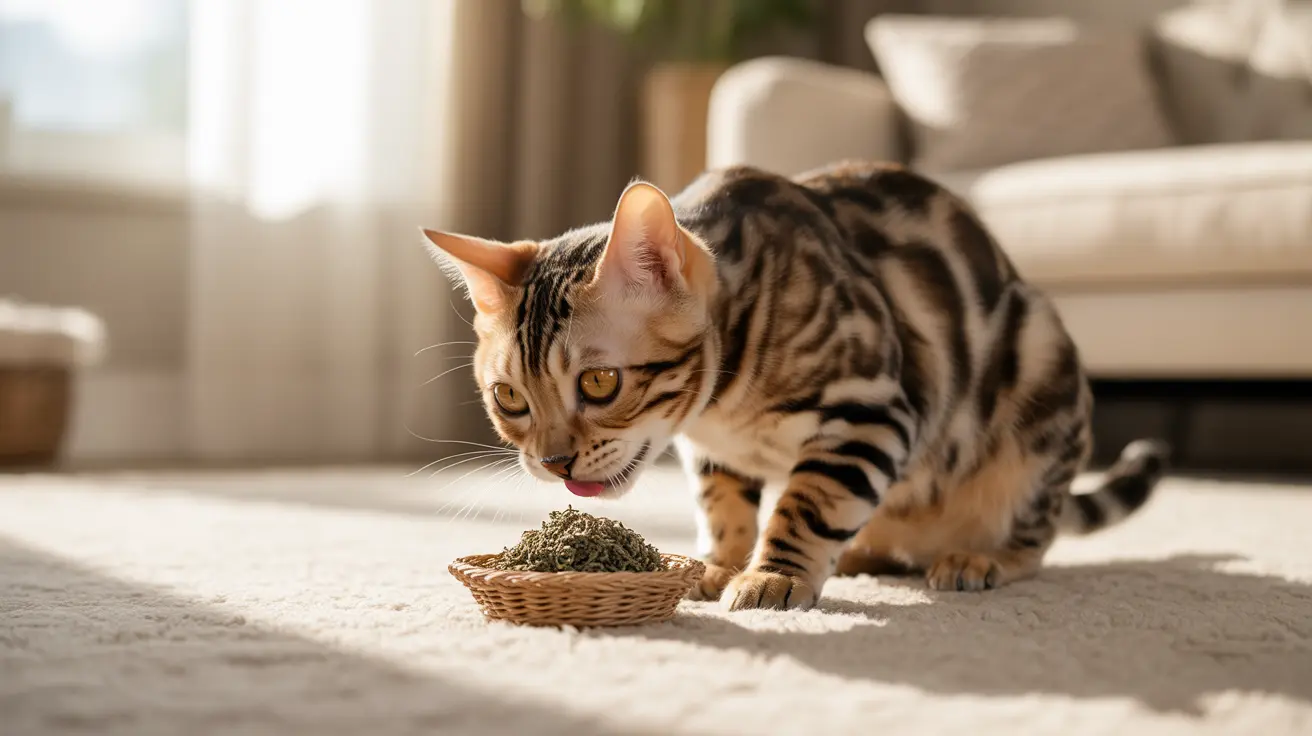Many cat owners enjoy watching their feline friends experience the euphoric effects of catnip, but concerns about potential overdose are common. While catnip is generally safe and non-toxic, understanding its effects and proper usage is crucial for responsible pet care. Let's explore whether cats can overdose on catnip, what symptoms to watch for, and how to use this popular herb safely.
What is Catnip and How Does it Work?
Catnip (Nepeta cataria) is a natural herb from the mint family that contains nepetalactone, a compound that triggers behavioral responses in cats. When cats smell or ingest catnip, the compound binds to receptors in their nasal tissue, stimulating sensory neurons that affect the brain's pleasure centers.
Approximately 50-70% of cats respond to catnip due to a genetic predisposition. Kittens under three months old typically show no response, and some adult cats may never react to it. The effects usually last 10-15 minutes, followed by a refractory period of about 1-2 hours.
Signs of Catnip Overconsumption
While a true toxic overdose isn't possible with catnip, cats can experience mild adverse effects from overconsumption. Common signs include:
- Excessive drooling
- Vomiting or diarrhea
- Dizziness or disorientation
- Aggressive behavior
- Extreme lethargy after initial excitement
Safe Usage Guidelines and Prevention
To prevent your cat from consuming too much catnip, follow these safety measures:
- Offer small amounts (1/4 to 1/2 teaspoon) at a time
- Limit exposure to once or twice a week
- Store catnip in sealed containers out of reach
- Supervise your cat during catnip play sessions
- Remove catnip if your cat shows signs of distress
When to Contact Your Veterinarian
While most cases of catnip overconsumption resolve on their own, certain situations warrant veterinary attention. Contact your vet if your cat experiences:
- Prolonged vomiting or diarrhea
- Unusual aggression lasting more than an hour
- Severe lethargy or unresponsiveness
- Signs of allergic reaction (breathing difficulties, swelling)
Alternative Enrichment Options
If your cat is sensitive to catnip or you're concerned about overuse, consider these alternatives:
- Silver vine
- Valerian root
- Cat grass
- Interactive toys
- Puzzle feeders
Frequently Asked Questions
Can cats overdose on catnip and what are the signs of catnip overdose?
While cats cannot experience a fatal overdose from catnip, they can show signs of overconsumption including vomiting, diarrhea, excessive drooling, and unusual behavior. These symptoms typically resolve within a few hours.
How much catnip is safe to give my cat to prevent any adverse effects?
A small pinch (1/4 to 1/2 teaspoon) of dried catnip is typically safe. Limit exposure to once or twice weekly to prevent desensitization and potential stomach upset.
What should I do if my cat shows symptoms like vomiting or aggression after playing with catnip?
Remove access to catnip immediately and monitor your cat. Most symptoms resolve within a few hours. If symptoms persist or worsen, contact your veterinarian.
Why do some cats not respond to catnip while others get hyperactive or relaxed?
Sensitivity to catnip is genetic, with about 50-70% of cats responding. The variation in response (relaxation vs. excitement) depends on individual cats and whether they smell or ingest the herb.
How often can I safely give my cat catnip without causing desensitization or health issues?
Offering catnip once or twice a week is generally safe and helps prevent desensitization. This frequency maintains the herb's effectiveness while minimizing the risk of adverse effects.
Conclusion
While cats cannot fatally overdose on catnip, responsible use is important for their wellbeing. By following proper dosage guidelines and monitoring your cat's reaction, you can safely incorporate catnip into their enrichment routine. If you have concerns about your cat's response to catnip, consult with your veterinarian for personalized advice.






